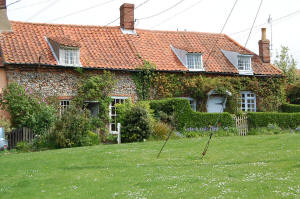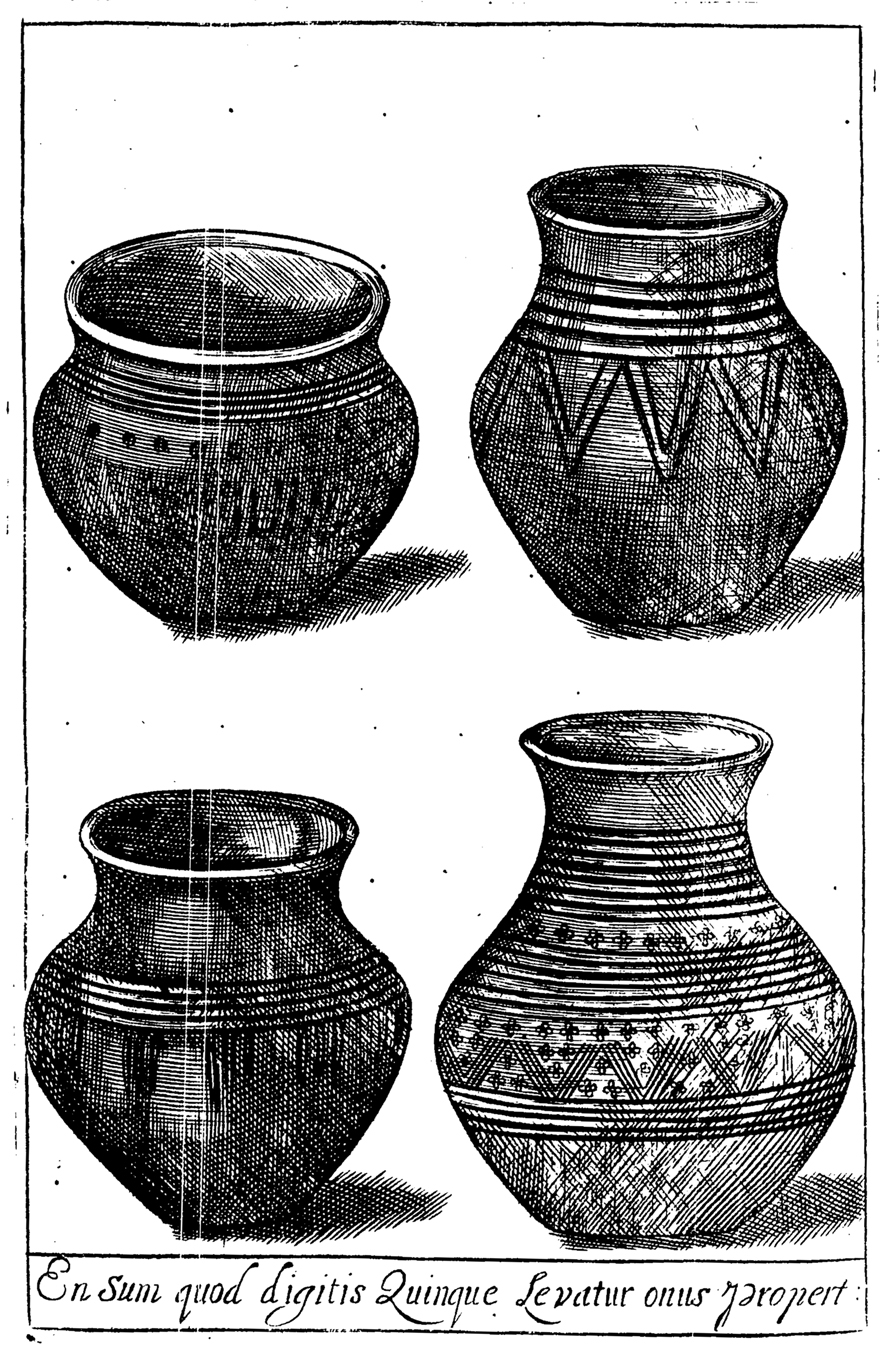Great Walsingham
Great Walsingham lies approximately one mile west of
Little Walsingham.
In typical 'normal for Norfolk' fashion, it is
actually smaller than Little Walsingham.

Cottages at Great
Walsingham

Frontispiece from
Hydriotaphia
In 1658, in a field in the village, 40-50 urn burials were unearthed. This
inspired Sir Thomas Browne
of Norwich to write his
Hydriotaphia - Urne-Burial or, A Brief
Discourse of the Sepulchrall Urnes Lately Found in
Norfolk. However, he
mistakenly assumed they were Roman when they were,
in fact, Saxon. Here is the extract from the book:
|
|
'In a Field in old Walsingham, not many moneths
past, were digged up between fourty and fifty Urnes,
deposited in a dry and sandy soile, not a yard deep, not
farre from one another: Not all strictly of one figure,
but most answering these described: Some containing two
pounds of bones, distinguisable in skulls, ribs, jaws,
thigh-bones, and teeth, with fresh impressions of their
combustion. Besides the extraneous substances, like
peeces of small boxes, or combes handsomely wrought,
handles of small brasse instruments, brazen nippers, and
in one some kinde of Opale.' |
The book was a meditation upon mortality and has
produced a number of famous quotes including:
|
|
'The long habit of living indisposeth us for dying.'
'Man is a noble animal, splendid in ashes, and pompous
in the grave.'
'Generations pass while some trees stand, and old
families last not three oaks.'
'To be nameless in worthy deeds exceeds an infamous
history.'
'But to subsist in bones, and be but pyramidally
extant, is a fallacy in duration.' |
In the first chapter of The Rings of Saturn W.G.
Sebald meditates, in turn, upon Thomas Browne and
Hydriotaphia:
|
|
'The inquiry of oblivion blindly scatters her poppyseed
and when wretchedness falls upon us one summer's day
like snow, all we wish for is to be forgotten. These are
the circles Browne's thoughts describe, most
unremittingly perhaps in Hydriotaphia or Urn
Burial of 1658, a discourse on sepulchral urns found
in a field near Walsingham in Norfolk. Drawing upon the
most varied of historical and natural historical
sources, he expatiates upon the rites we enact when one
from our midst sets out on his last journey.' |
Links:
More Sir Thomas Browne photographs |
|

